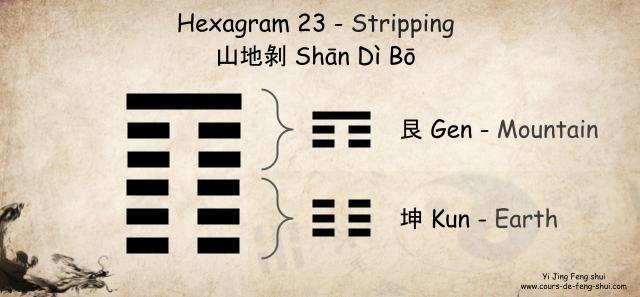
Hexagram 23 of the Yi Jing, also known as “Stripping” or “Splitting Apart,” is a significant symbol in Chinese metaphysics. This hexagram is composed of the upper trigram Gen (艮, the Mountain, representing stability and immobility) and the lower trigram Kun (坤, the Earth, symbolizing receptivity and nurturing). The imagery suggests a situation where what is strong and stable is gradually being eroded or stripped away by weaker forces.
Interpretation
Hexagram 23 embodies the concept of decadence and disintegration. It marks a time when the strength and integrity of a situation are compromised as weak elements accumulate, leading to the eventual downfall of what was once strong. This process is slow and insidious, highlighting the danger of allowing negative influences to persist unchecked.
In Chinese, this hexagram is known as 山地剝 (Shān Dì Bō), translating to “The Burst.” It reflects the idea of stripping away or peeling back, symbolizing a time of significant loss or reduction.
Calendar and Jia Zi Associations
Hexagram 23 is associated with the ninth month of the Chinese calendar, corresponding to October. The earthly branch for this month is 戌 (Xu), linked with the Dog in the Chinese zodiac. The hexagram is further associated with the 60th combination in the sexagesimal cycle, 癸亥 (Gui Hai). Here, Gui represents the Yin aspect of Water, and Hai corresponds to the Pig, adding layers of meaning to the hexagram’s interpretation.
Opposite, Inverted, and Nuclear Hexagrams
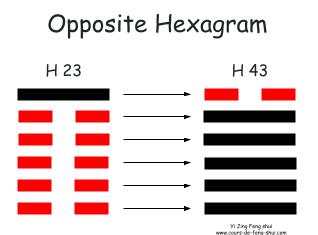
- Opposite Hexagram: The opposite of Hexagram 23 is Hexagram 43 – Guai (澤天夬), known as “Breakthrough.” This hexagram represents the solution or counterforce to the disintegration seen in Hexagram 23, emphasizing decisive action and the need to cut through obstacles.
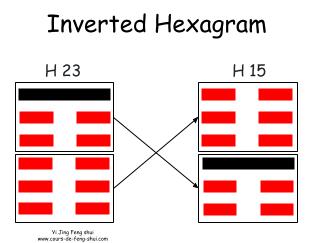
- Inverted Hexagram: When the trigrams of Hexagram 23 are inverted, it transforms into Hexagram 15 – Qian (謙), meaning “Humility.” This inversion reveals the origins of the current situation, suggesting that a lack of humility or an excess of pride may have led to the current state of decline.
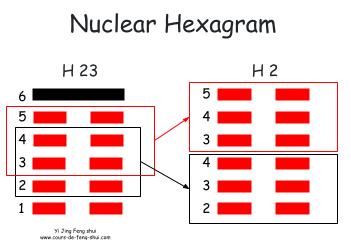
- Nuclear Hexagram: The nuclear hexagram of Hexagram 23 is Hexagram 2 – Di (坤), “The Receptive.” This core hexagram speaks to the heart of the problem, emphasizing receptivity and the nurturing aspect of the situation, suggesting that the situation requires a return to fundamental, receptive values.
Mutant Hexagrams
When specific lines in Hexagram 23 mutate, they give rise to different hexagrams, each indicating a potential evolution or outcome:
- Line 6 mutes to form Hexagram 2
- Line 5 mutes to form Hexagram 20
- Line 4 mutes to form Hexagram 35
- Line 3 mutes to form Hexagram 52
- Line 2 mutes to form Hexagram 4
- Line 1 mutes to form Hexagram 27
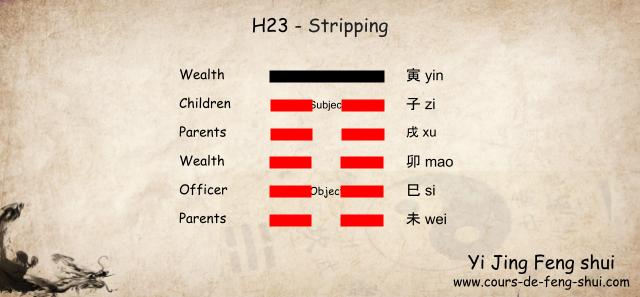
Taoist Yi Jing Interpretation
In the Taoist interpretation of the Yi Jing, specifically through the Wen Wang Gua or Liu Yao divination method, Hexagram 23 is placed within the context of the Qian family (Metal), where the Subject is placed on the fifth line, and the Object is placed on the second line.
The Six Relatives
Each line in Hexagram 23 corresponds to one of the six relatives, further enriching the interpretation:
- Line 6 mutes to form Hexagram 2
- Line 5 mutes to form Hexagram 20
- Line 4 mutes to form Hexagram 35
- Line 3 mutes to form Hexagram 52
- Line 2 mutes to form Hexagram 4
- Line 1 mutes to form Hexagram 27